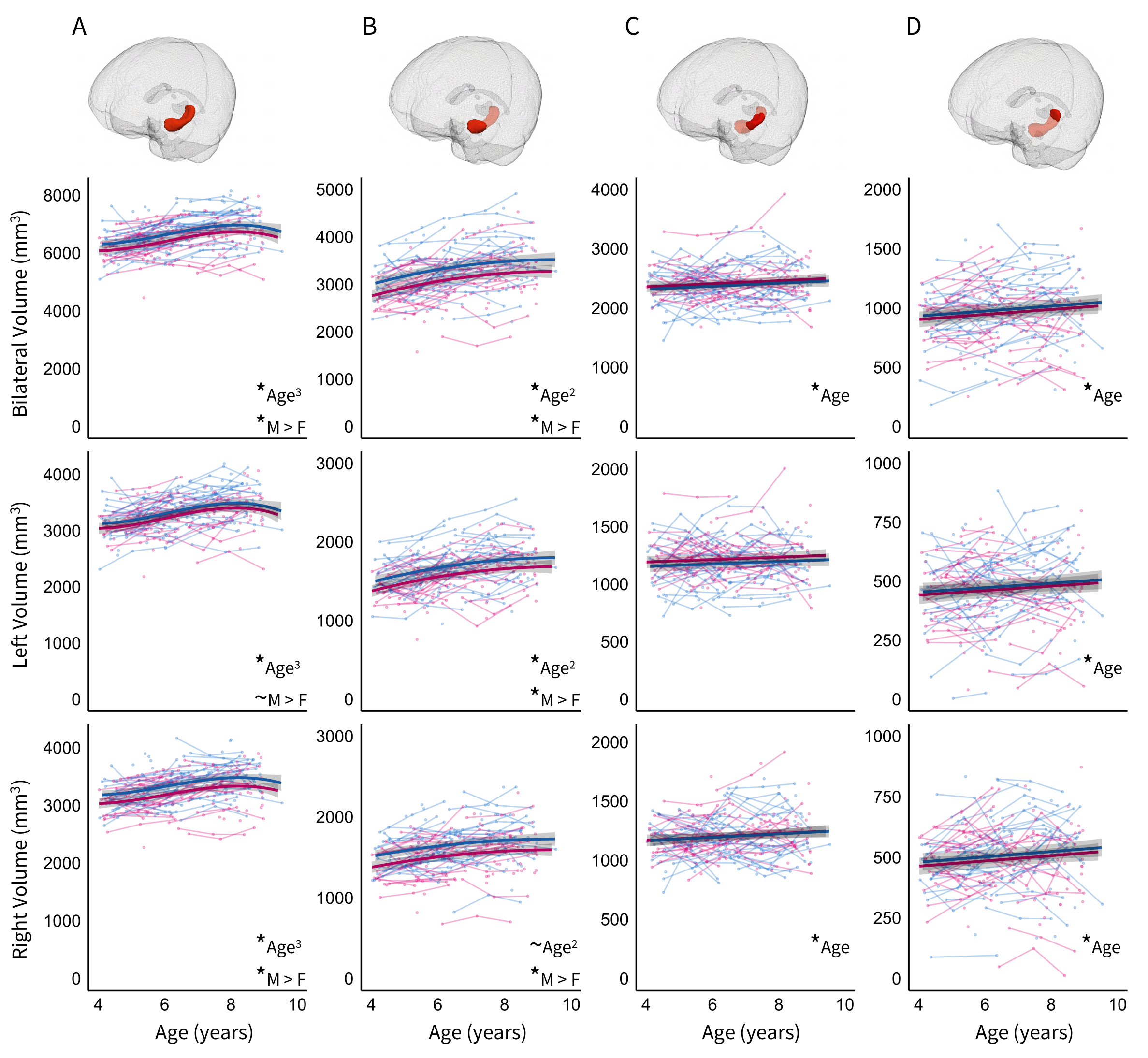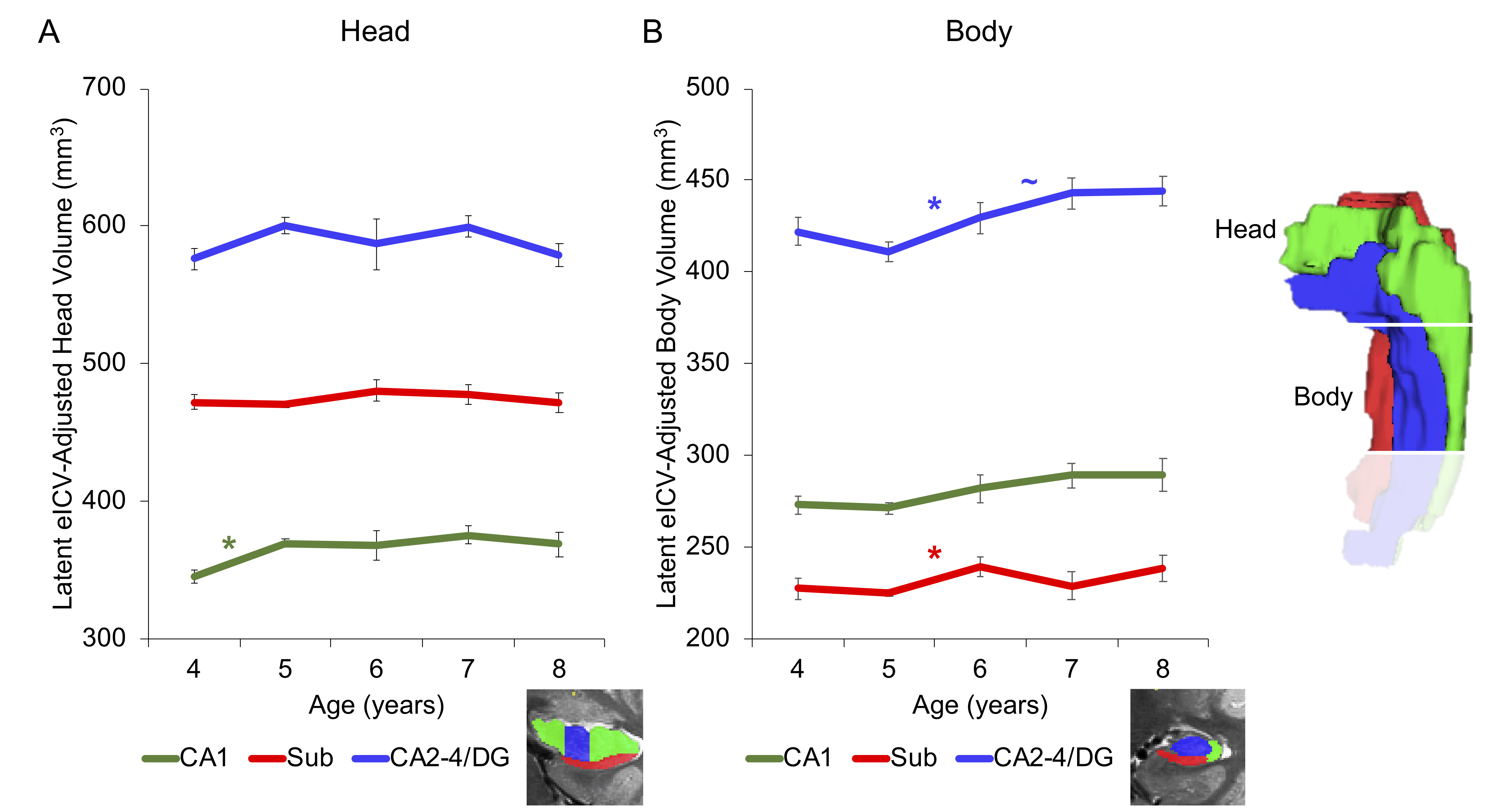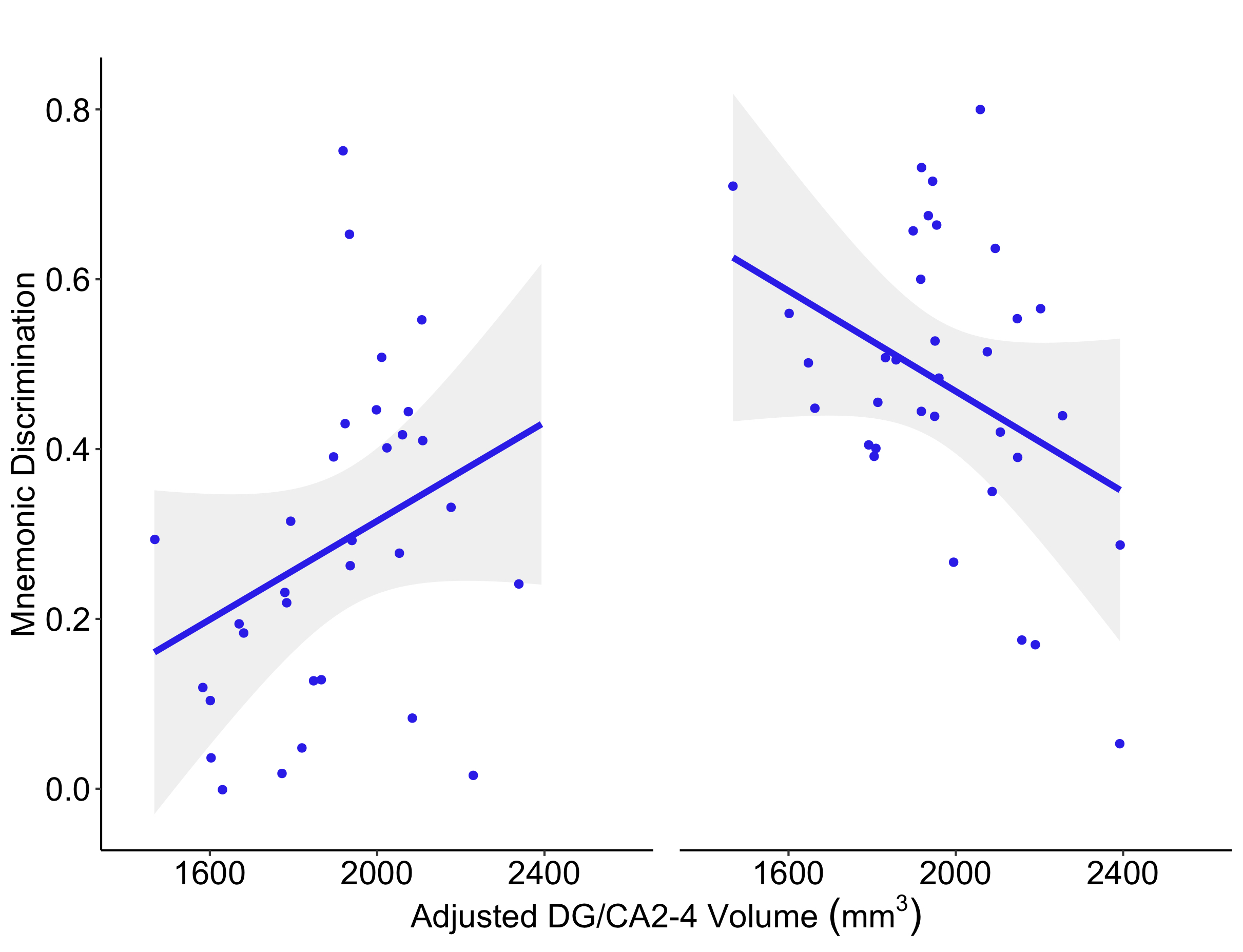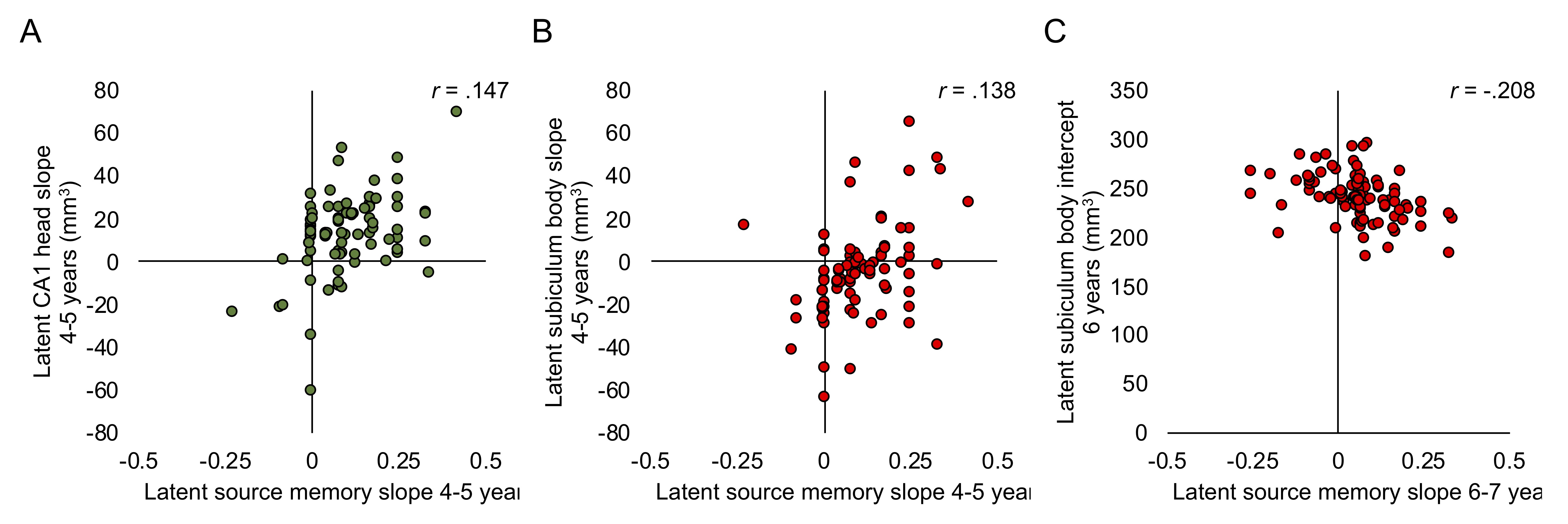research
overview
The amazing improvements in children's cognitive abilities, especially episodic memory, across development never cease to amaze me. The goal of my research is to progress our understanding of how and why cognitive abilities change from childhood to adulthood. My focused interest is in how these changes are related to brain development.
I conduct multidisciplinary and collaborative research on the healthy development of the hippocampus to understand the role of this structure in supporting cognitive gains observed across development.
hippocampal development in early childhood
Across development, the hippocampus is critical to a range of cognitive and emotional processes important for survival and daily functioning, including episodic memory.
This region is complex and can be divided along its longitudinal axis into subregions (head, body, and tail) and into functionally distinct subunits (subfields: cornu ammonis (CA) 1-3, dentate gyrus (DG), and subiculum).

subregions

subfields

My work showed hippocampal subfields differentially develop within head and body. In hippocampal head, CA1 volume increases between 4 to 5 years. In hippocampal body, CA2-4/DG and subiculum volume increase between 5 to 6 years.
neural correlates supporting gains in young children's memory

In a cross-sectional sample of 4- to 8-year-olds, age moderated the relation between variability in CA2-3/DG volume and mnemonic discrimination (i.e., a behavioral index of pattern separation). Larger volumes related to better performance in younger children while smaller volumes related to better performance in older children.
